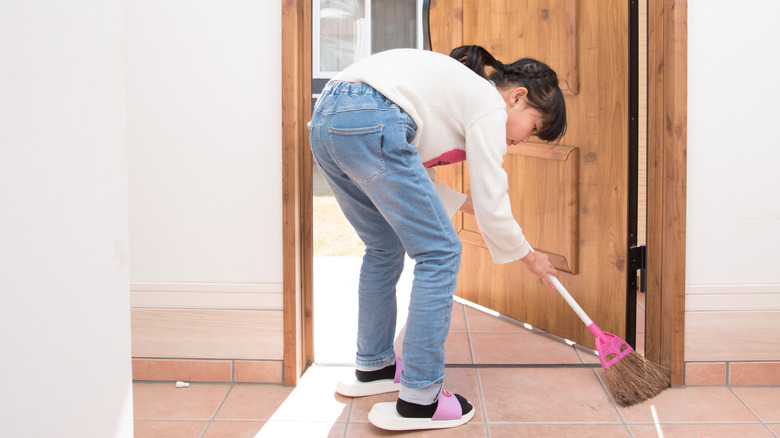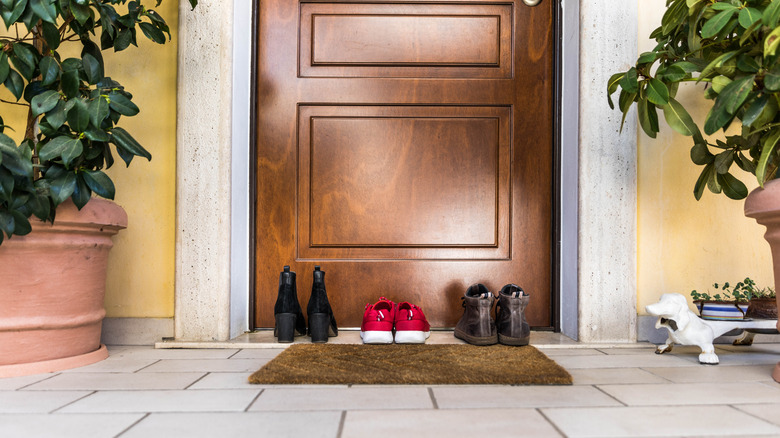The Entryway Design Tip That Helps Keep Your Floors Clean For Longer
We may receive a commission on purchases made from links.
Your entryway or foyer room in the home is a place for transitioning when going from outdoors to indoors. It is often utilized as a storage area for taking off shoes, hanging up coats or bags, and where you keep a stand for checking the mail or putting away keys. Keeping your entryway clean can be a challenge when you're constantly bringing elements from outside into that transitional space. Whether you have hardwood or carpeted floors, you've probably noticed it becomes a catchall location for dirt, leaves, moisture, and more. However, you can help keep your floors clean for longer by incorporating a doormat.
Doormats are often viewed as a popular choice for decoration to add a sense of flair to your home on the outside or immediately inside the front door of your home. While materials, quality, and functions may vary, having a doormat is usually revered as a way to welcome people into your home. The problem is that most people coming in are wiping their shoes off or stomping their feet to clean them. So, there is a lot more dirt, moisture, and other debris that builds up on the floors. The doormat is your first line of defense as a way to protect your home from the dirt, and it can end up saving you hours of cleaning every week. It may also be beneficial to have two doormats for more than one place to trap dirt and help keep your floors cleaner. Place one mat outside and the other inside of your home's entryway as extra defense for your floors.
Choosing the best doormat (or two) to keep your floors cleaner
It is helpful to compare doormat materials to find what suits your needs. For instance, synthetic doormats are washable, water-resistant, and offer some pretty designs and patterns; while cotton or natural fiber mats are eco-friendly, though they can develop mold and mildew. These types, like the Lahome indoor mat, are efficient inside your entryway to trap smaller particles that are left on shoes. If you have pets, a more absorbent and washable mat, like the Muddy Mat microfiber dog doormat, can help clean off dirty paws. For extra protection, consider adding an area rug in your entryway.
On the other hand, coir doormats are thick, can pull off dirt and debris easily, and are made of a very durable material. Likewise, rubber mats are slip-resistant, waterproof, and typically have an abrasive surface. These mats, such as the PLUS Haven coco coir doormat, are designed with exposure to weather elements in mind and are best for trapping debris and mud outside of your home.
When choosing a size, ensure your doormat fits at least the majority of the width of the doorway. Plus, the door should have enough clearance to open and close easily over it without sticking. If it doesn't come with a rubber backing, consider adding gripper rug tape on the bottom to keep it in place. Finally, these mats are made to get dirty, so it's important to know how to best clean your doormat – usually by shaking it out, washing, or vacuuming it regularly.

